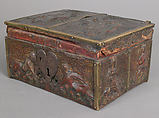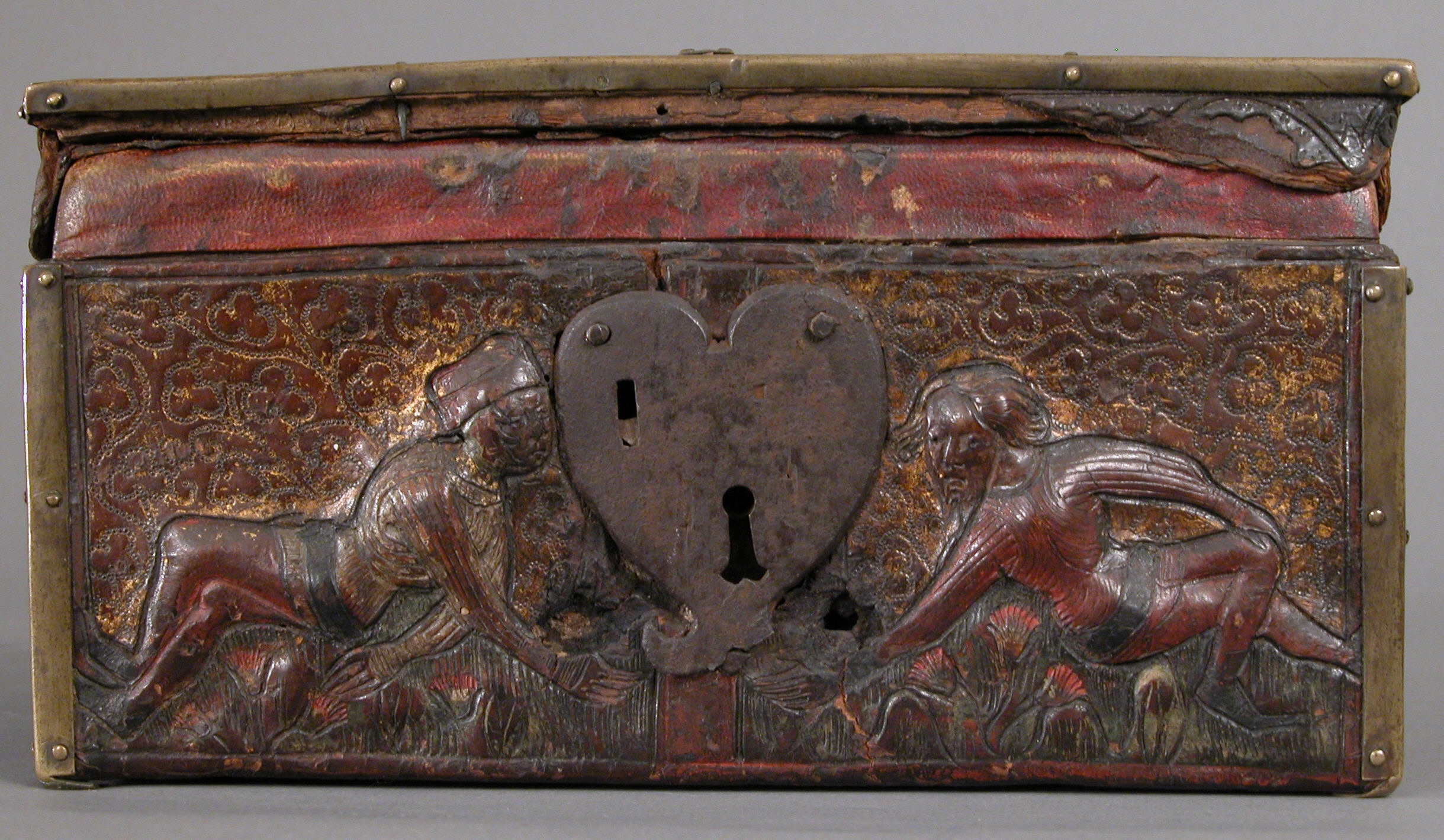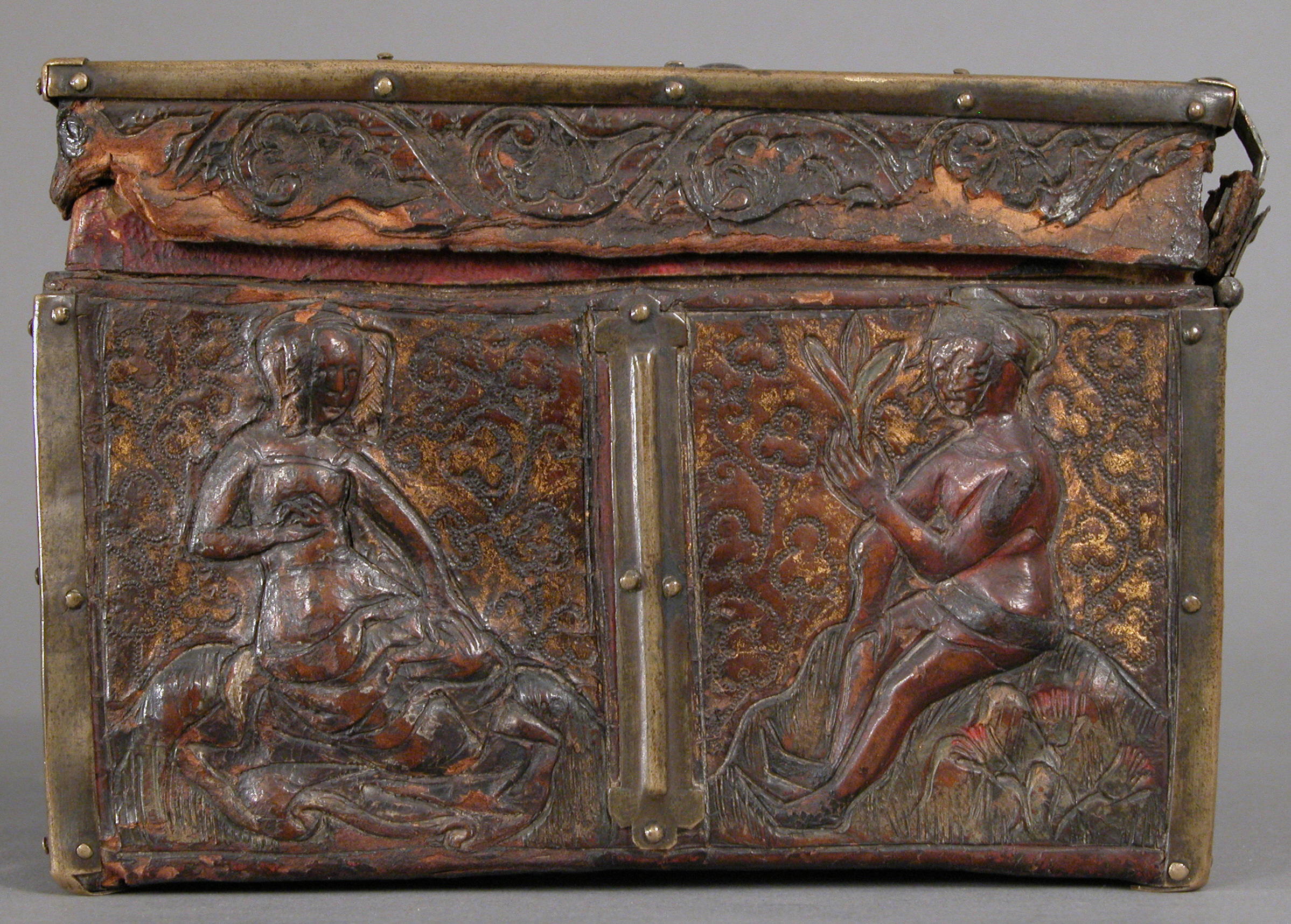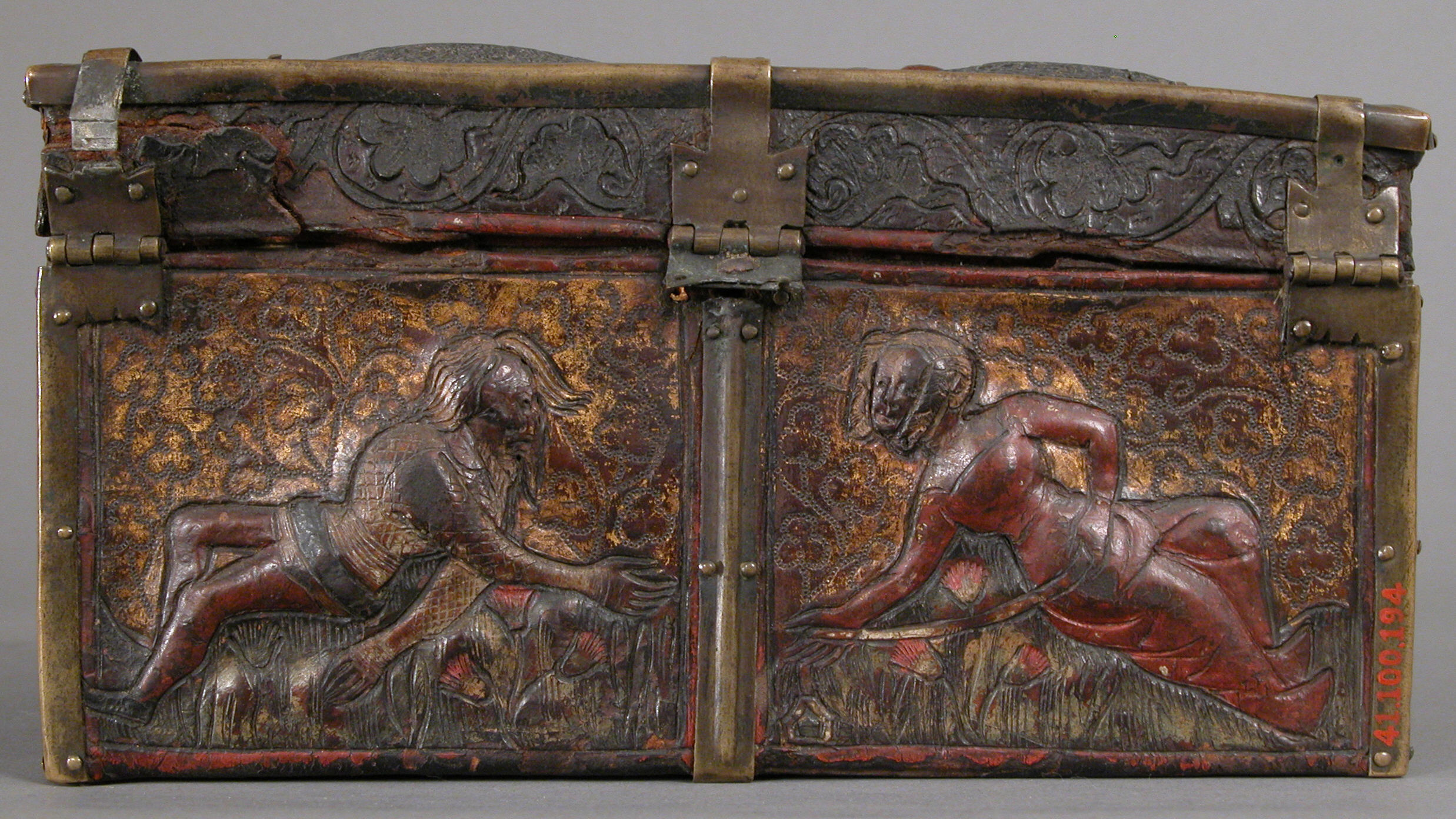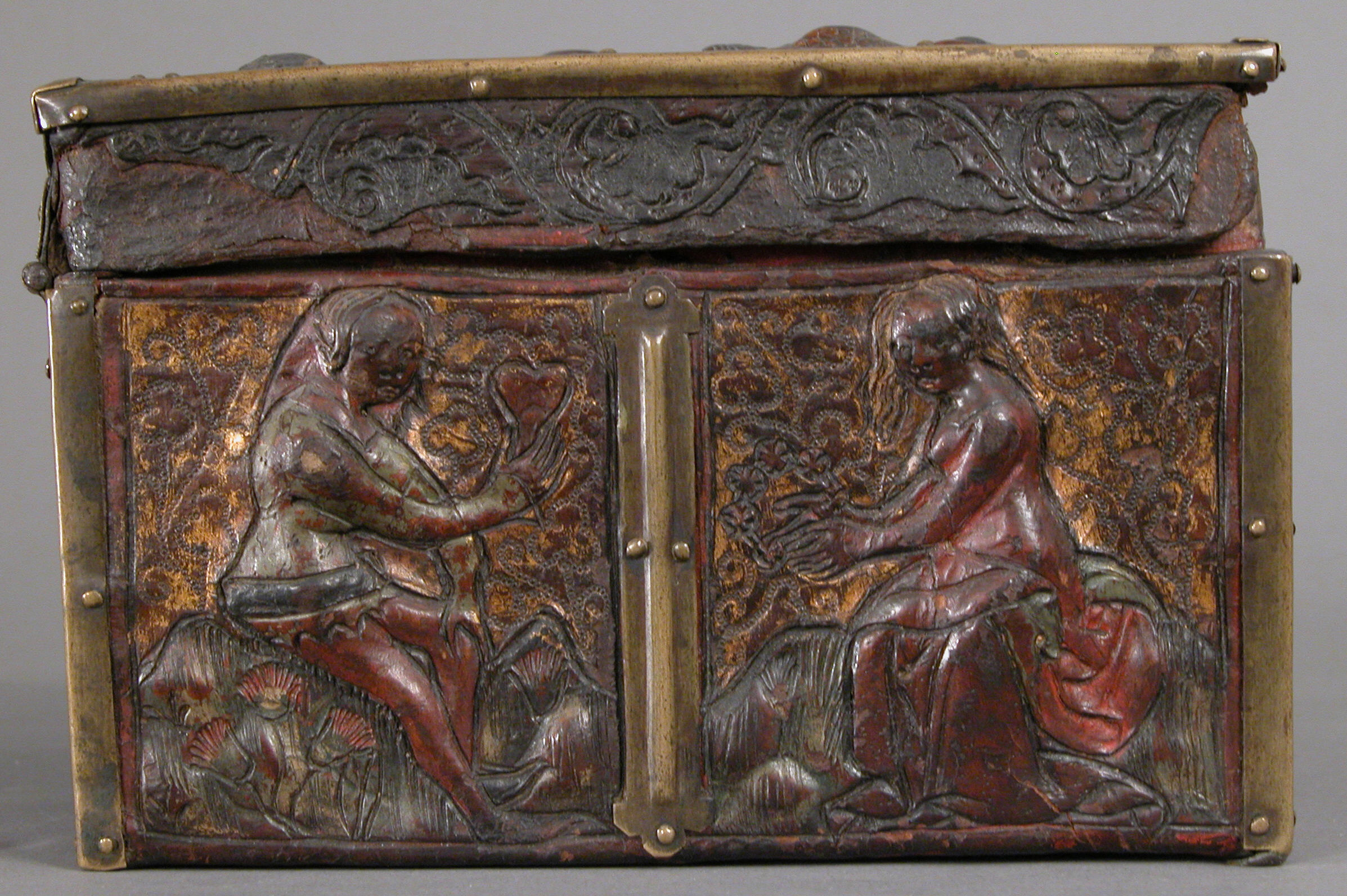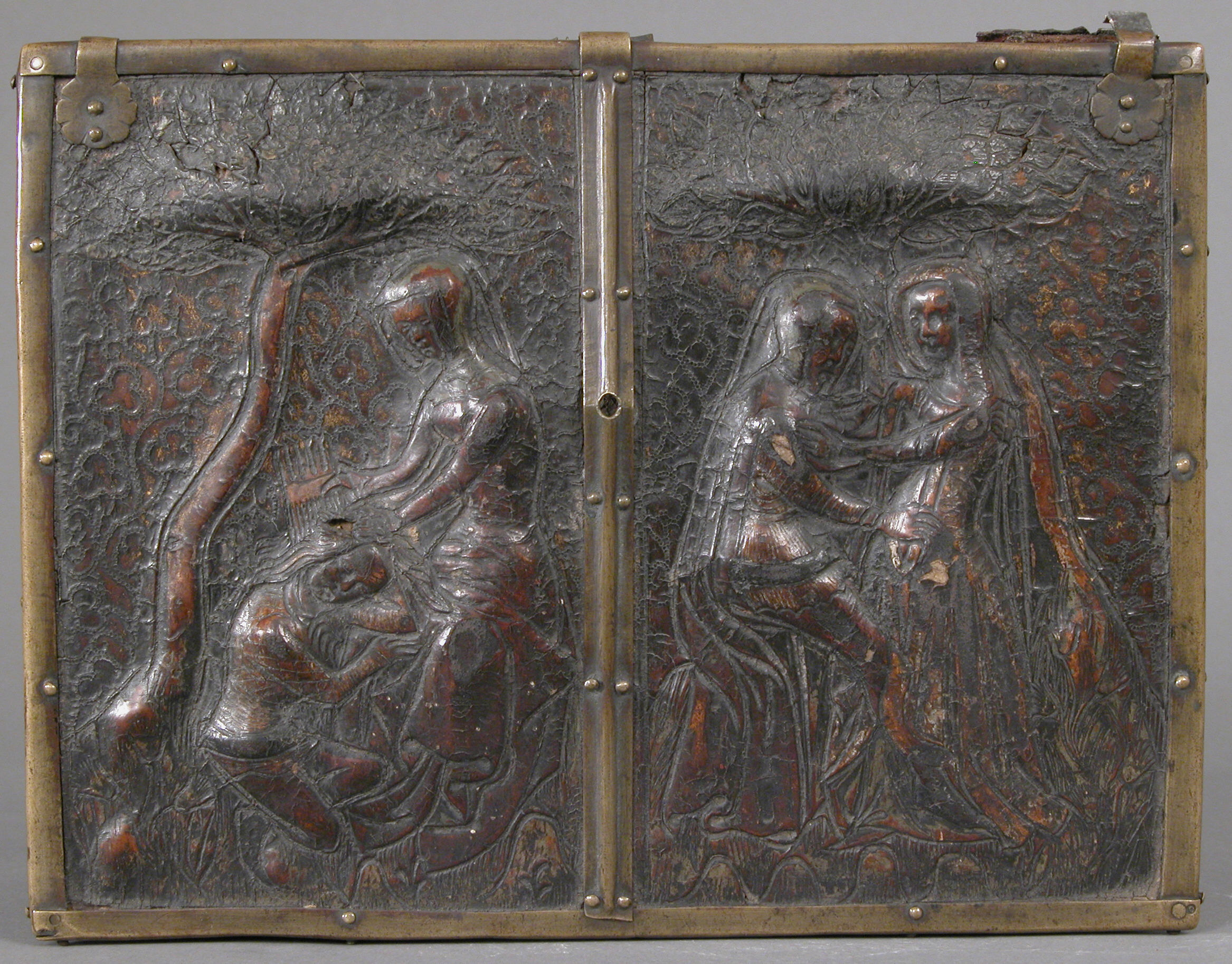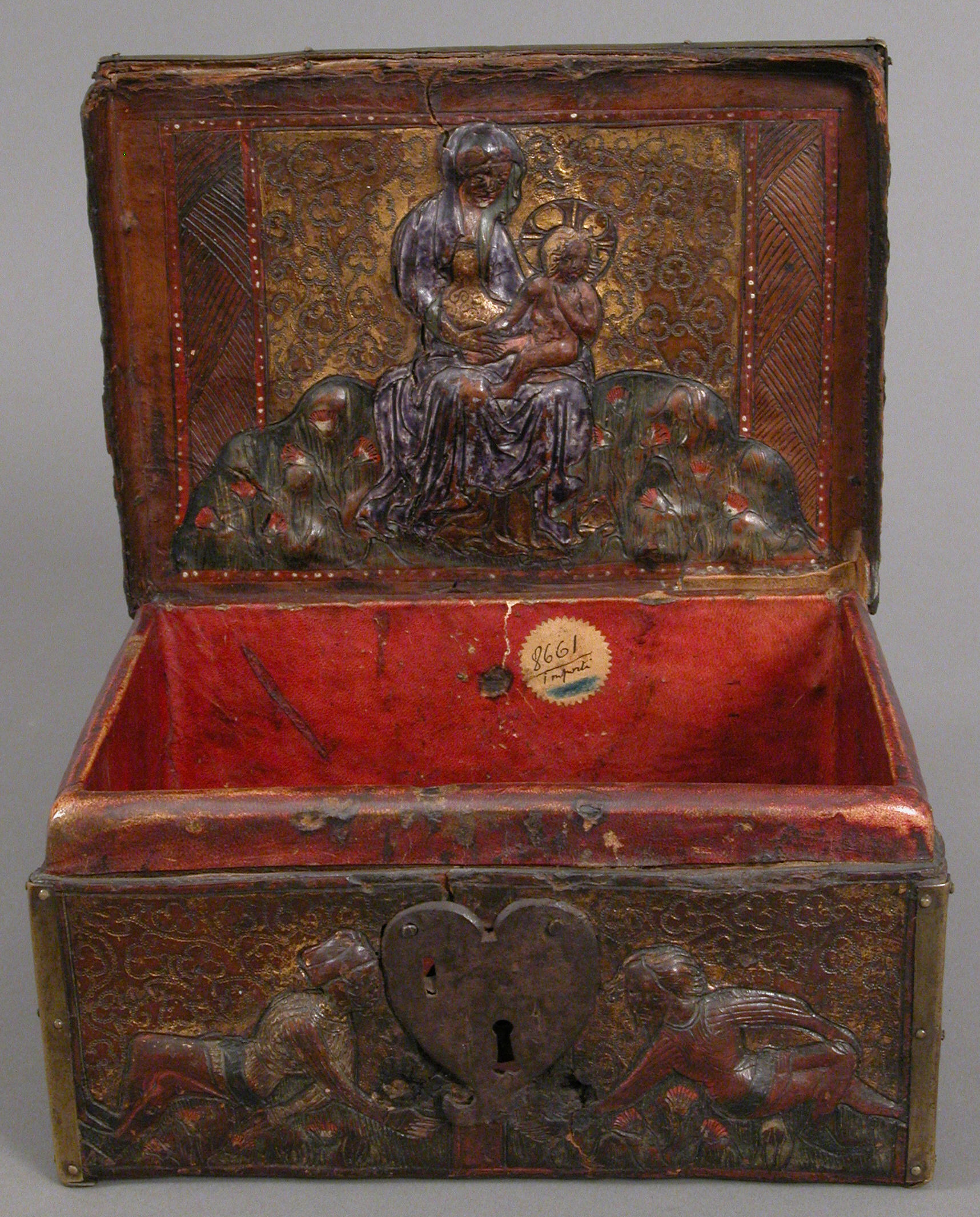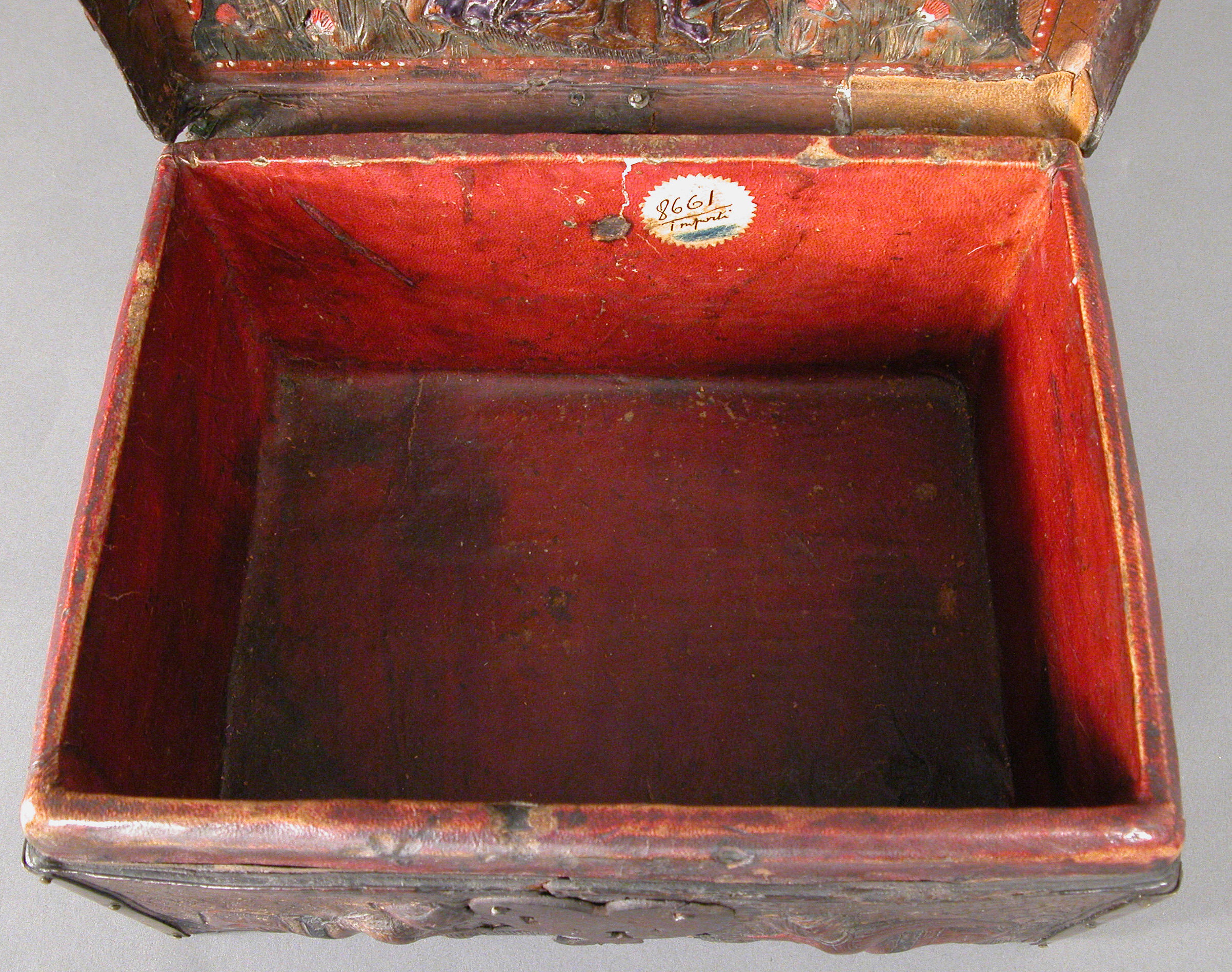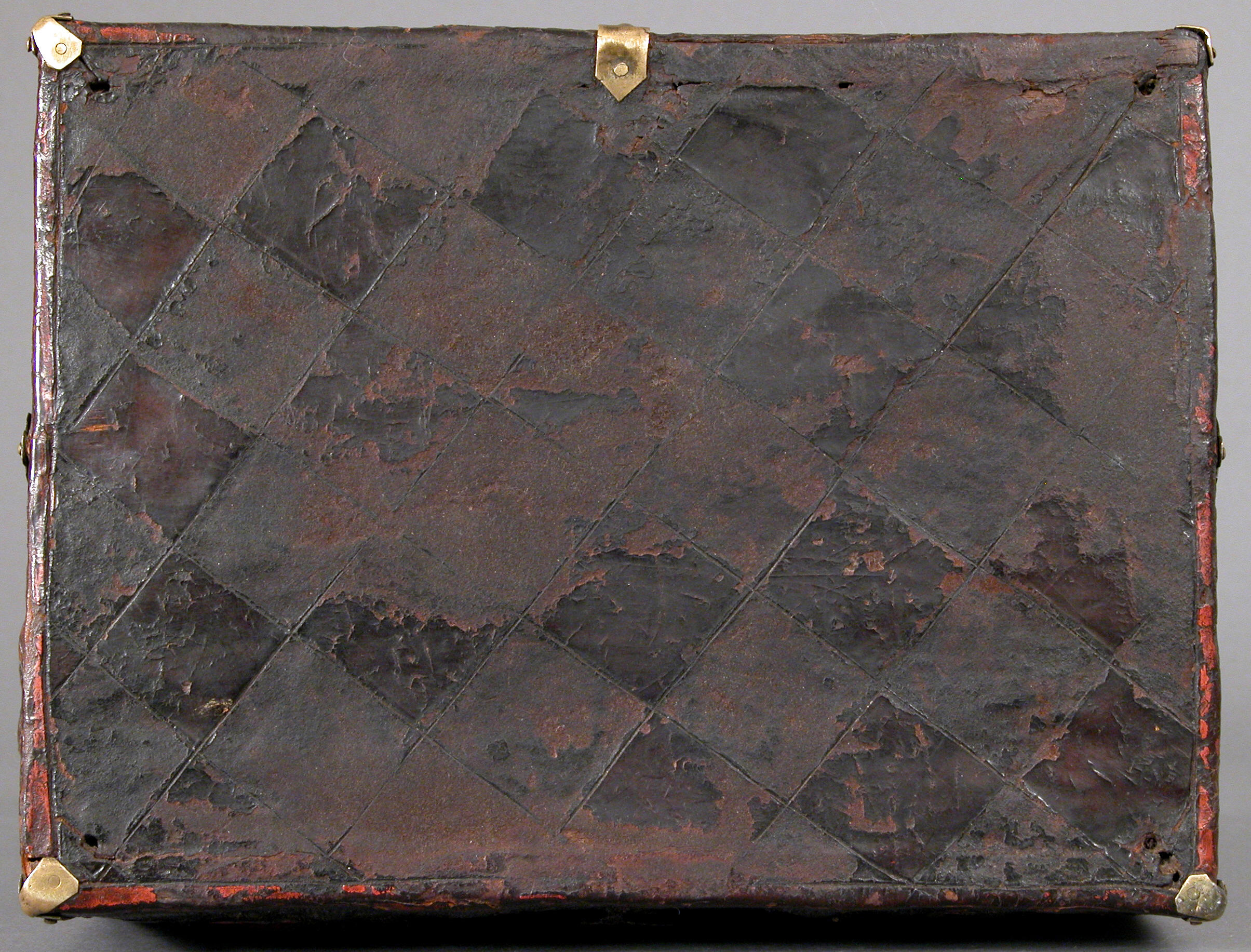Coffret
Not on view
This casket, like many late medieval secular objects, is decorated with scenes of courtship or romances based on medieval concepts of courtly love. In this example, a lover offers his lady his heart while she combs his hair and gives him, in return, her girdle as a token of her affection.
The earliest cogent expression of courtly love is probably to be found in the twelfth-century troubadour songs of southern France. The code of courtly love, formalized in the late twelfth and early thirteenth centuries, was observed, in some places, will into the fifteenth century. A popular author, Christine de Pisan (circa 1360-1430), expressed the sentiments of her day: "For it is well known there is no joy on earth that is so great as that of the lover and the beloved."
Typical in the Middle ages, the line between religious and secular subject matter is fine, for on the inside of the cover of this casket is a representation of the Virgin and Child.
Due to rights restrictions, this image cannot be enlarged, viewed at full screen, or downloaded.
This artwork is meant to be viewed from right to left. Scroll left to view more.
